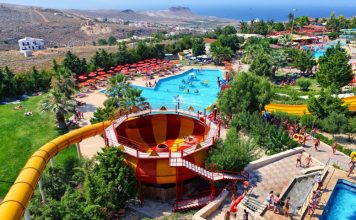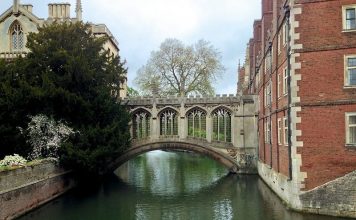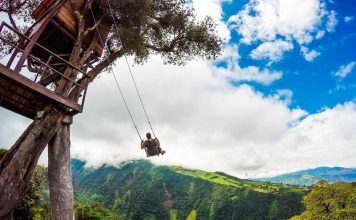Peru is a fascinating country in South America, known for its rich culture, diverse nature, and ancient history. It is one of the most biodiverse and megadiverse countries in the world, with habitats ranging from the arid coast to the high Andes, and the lush Amazon rainforest. Peru is also home to several indigenous peoples and civilizations, including the famous Inca Empire. Here are some interesting facts about Peru that you may not know:
How Peru got its name and what it means
The origin of the name Peru is not clear, but there are several theories. One of them is that it comes from the word pelu, which means river in the language of the local people who lived near the Pacific coast. Another theory is that it comes from the word Birú, which was the name of a ruler or a region in the south of Panama. A third theory is that it comes from the Quechua word piruw, which means land of abundance. Whatever the source, the name Peru was first used by Spanish explorers in the 16th century, and it became the official name of the country after independence in 1821.
How Peru has more than 90 microclimates and a wide variety of wildlife
One of the most interesting facts about Peru is that it has more than 90 microclimates, which are small areas with different climatic conditions than the surrounding regions. This is due to Peru’s varied geography, which includes three main regions: the coast, the mountains, and the jungle. Each region has its own weather patterns, vegetation, and wildlife. For example, the coast is mostly dry and desert-like, but it also has some fertile valleys and oases. The mountains are cold and snowy, but they also have some tropical areas and glaciers. The jungle is hot and humid, but it also has some highlands and rivers.
Peru’s microclimates allow for a high diversity of flora and fauna. Peru has more than 25,000 plant species, 1,800 bird species, 500 mammal species, 300 reptile species, 400 amphibian species, and 2,000 fish species. Some of the animals that live in Peru are unique or endemic to the country, such as the spectacled bear, the vicuña, the Andean condor, the giant otter, and the pink river dolphin.
How Peru has one of the oldest civilizations in the world and a rich cultural heritage
Peru has a long and complex history that dates back to thousands of years ago. The oldest known civilization in Peru is Caral-Supe, which flourished in the coastal region around 3000 BC. Caral-Supe is considered to be one of the six cradles of civilization in the world, along with Mesopotamia, Egypt, China, India, and Mesoamerica. Caral-Supe had a sophisticated urban planning, architecture, agriculture, religion, and art.
Peru was also home to many other cultures and civilizations over time, such as Chavín, Paracas, Nazca, Moche, Wari, Tiwanaku, Chimu, Chachapoyas, and Inca. Each of them left behind impressive monuments, artifacts, textiles, pottery, jewelry, and art. Some of the most famous examples are Machu Picchu (the citadel of the Inca), Nazca Lines (the geoglyphs of Nazca), Chan Chan (the city of Chimu), Kuelap (the fortress of Chachapoyas), and Sipán (the tomb of Moche).
Peru’s cultural heritage is also reflected in its current population, which is a mix of indigenous peoples (such as Quechua and Aymara), mestizos (mixed European and indigenous), Afro-Peruvians (descendants of African slaves), Europeans (mainly Spanish), Asians (mainly Chinese and Japanese), and others. Peru’s culture is also influenced by its diverse geography and climate. For example,
- The coast has a strong maritime tradition and cuisine based on seafood.
- The mountains have a strong Andean tradition and cuisine based on potatoes and corn.
- The jungle has a strong Amazonian tradition and cuisine based on fruits and fish.
How Peru has some amazing natural wonders and attractions
Peru is not only a country with a rich history and culture but also a country with stunning natural beauty. Peru has many natural wonders and attractions that attract tourists from all over the world. Some of them are:
- Lake Titicaca: The highest navigable lake in the world at 3,812 meters above sea level. It is also one of the largest lakes in South America with a surface area of 8,372 square kilometers. Lake Titicaca is shared by Peru and Bolivia and has many islands with ancient cultures and traditions.
- Colca Canyon: The second deepest canyon in the world at 3,270 meters deep. It is also one of the most scenic canyons in the world with colorful terraces, waterfalls, hot springs, and volcanoes. Colca Canyon is home to the Andean condor, the largest flying bird in the world with a wingspan of up to 3.2 meters.
- Rainbow Mountain: A spectacular mountain range with stripes of different colors due to the mineral composition of the rocks. The colors range from red, yellow, green, blue, purple, and white. Rainbow Mountain is located in the Ausangate region of the Andes and requires a challenging hike to reach.
- Huascarán National Park: A UNESCO World Heritage Site that covers an area of 3,354 square kilometers in the Cordillera Blanca mountain range. It is one of the most biodiverse and beautiful parks in Peru with more than 600 glaciers, 300 lakes, 27 peaks over 6,000 meters high, and 120 species of birds. Huascarán National Park is also home to the Huascarán mountain, the highest peak in Peru at 6,768 meters high.















